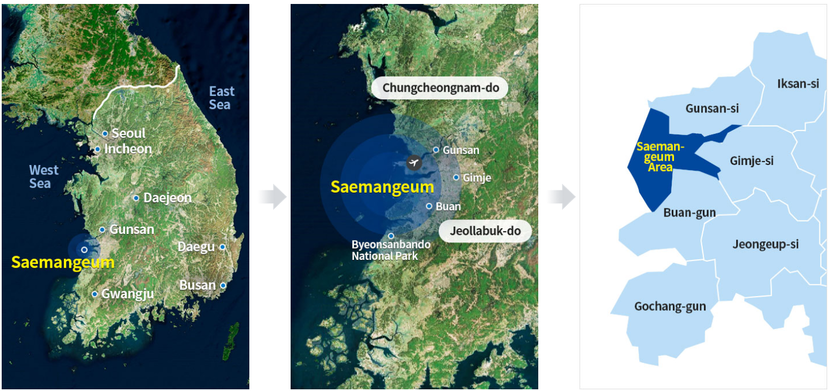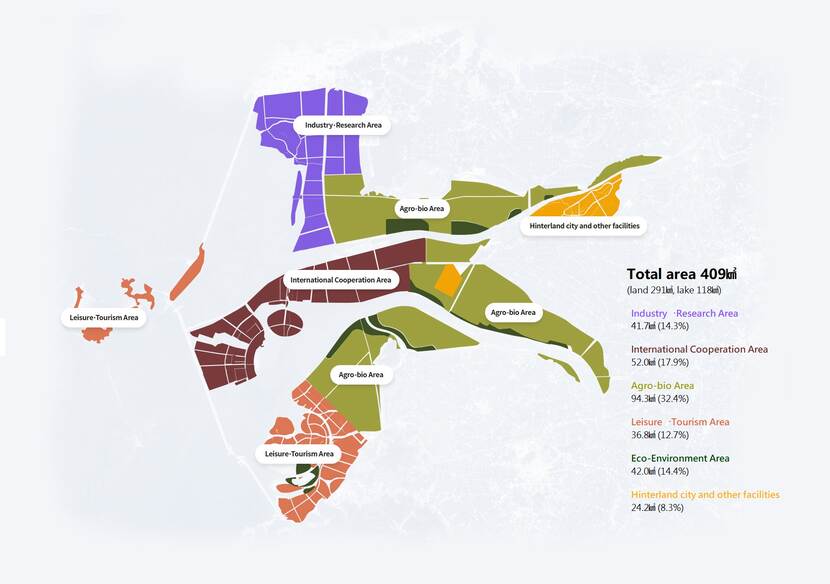The Netherlands will support South Korea to develop a food hub in the reclaimed land of Saemangeum
The Korean government commissioned Wageningen Food and Biobased Research(WFBR) in December 2023 as the institute to conduct a feasibility study and master planning for an envisaged food hub in the reclaimed land of Saemangeum. It is the first agrologistics study assigned to a foreign research institute in Korean history. WFBR will lead this project for one year by sharing Dutch expertise and experience in agrologistics, trade, post-harvest management, and cold chain. The total budget is around 700,000 euros.
Food hub in Saemangeum
Saemangeum is an estuarine tidal flat on the coast of the Yellow Sea in South Korea. It was dammed by building the world's longest seawall (33.9km) in 2006. The Saemangeum Project is Korea's largest-ever reclamation project, creating 40,900ha of reclaimed area, including 29,100ha of land and 11,800ha of freshwater. The Korean government has invested in infrastructure, including seaports, airports, and railways, to develop the land as an economic hub of East Asia. The original idea was to develop the land as 100% farming land, but the ratio has shrunk to 30% as urban development demand has grown. However, Saemangeum had difficulty in attracting investors for urban development. The Korean government returned to agrifood as the Jeonbuk (Jeollabuk-do) province is unique as the capital of agrifood business in Korea, having Foodpolis (Korean Food Valley), Seed Valley, and RDA (the governmental agricultural research institute) in the province. The Korean Government and Jeonbuk province would like to make a global food hub near the new seaport by building facilities and infrastructure to become a hub of imports and exports of agrifood products. The model is the food hub in the port of Rotterdam.

Wageningen Food and Biobased Research
The agricultural department of the Netherlands embassy in Seoul has kept in touch with WFBR to seek opportunities in agrologistics in South Korea for about four years. Since South Korea is one of Asia's most developed economies, it was up to the Korean Government or private sector to secure budget for a study. However, there was an initial lack in awareness of the importance of agrologistics. The Korean Government has recently become increasingly interested in agrologistics through close communication with the Korean private sector, such as Harim, the largest pork and chicken producing comapny in Korea. The embassy introduced WFBR to MAFRA (Korean Ministry of Agriculture, Food and Rural Affairs) and the Jeonbuk provincial Government at the beginning of 2023. In December 2023, the Korean government finally chose WFBR as the institute to conduct the feasibility study and make a master plan for the global food hub in Saemangeum. WFBR will conduct the study with local experts from Sejong University, Seoul National University and Inha University for one year. The plan aims to single out local agrifood products suitable for export, find efficient ways to deliver imported products such as grains to the domestic market or develop agrifood products that can be re-exported by processing imported raw materials. WFBR will also include elements that focus on sustainability, including post-harvest management, food loss and cold chain.

Agrologistics in South Korea at a glance
South Korea has a relatively good logistics system for processed food, meat, dairy, and fishery products. The retail system is also modernized and is evolving toward an integrated logistics system, mainly led by E-commerce companies. On the other hand, post-harvest management and cold chain for perishable products such as vegetables, fruits and flowers need improvement. Wholesale markets need renovation by introducing modern logistics systems, including cold storage. Those problems are mainly because of structural problems like lack of scale rather than lack of technology. The Korean government is making efforts for structural reform.
Another reason the Korean agrologistics system needs to catch up, is that Korea hardly exports agricultural produce abroad. Korea exports only sweet peppers, mushrooms and some processed foods abroad. The sweet peppers exported to Japan account for 40% of Korea's total agricultural produce exports abroad. The Korean Government wants to increase the export of fresh vegetables to Asian countries, especially China, Japan, and Singapore.
Agrifood imports are essential for food security. Korea's self-sufficiency rate of food is around 40%. Significantly, the self-sufficiency rate for grains is only 20%. Because the self-sufficiency rate of rice is almost 100%, Korea largely relies on the importation of wheat, maize, and soya, which are crucial for food and the animal feed industry. Korea has started thinking about an efficient Agrologistics system for the grains.
The food hub study that will be carried out by WFBR will be instrumental for the development and improvement of agrologistics systems in Korea. Future investments of the Korean Government, companies and investors in agrologistics offer ample opportunities for Dutch companies that are active in areas such as post-harvest management and cold chain logistics. Feel free to reach out to the agriculture department of the embassy of the Netherlands in Seoul for more information (seo-lnv@minbuza.nl).